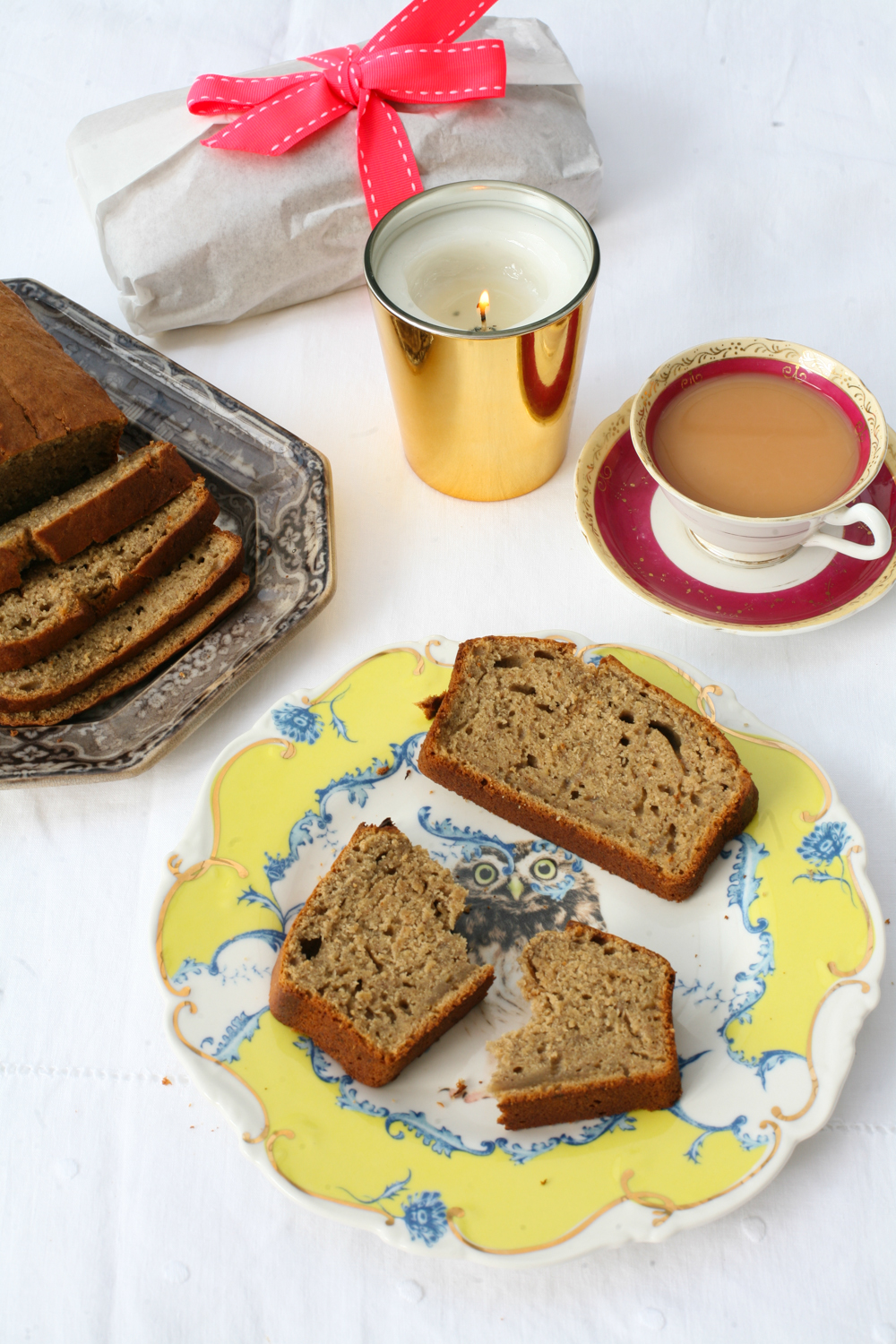One of my all time favourite bought cakes growing up was without doubt Jamaican ginger cake, which was deliciously sticky, sweet and gingery. It’s still available at some large supermarkets for a mere 65p. It is also a really lovely one to make at home yourself and tasting it automatically takes me back to my childhood. For those who really like ginger you can add some finely chopped stem ginger bites, or if you prefer a smoother cake consistency just omit this part. I added it this time, but often simply add ginger powder.
adapted from Afternoon Tea at Bramble Cafe by Mat Follas
Sticky Ginger Loaf
100g unsalted butter
100g light soft brown sugar
100g Lyle’s golden syrup
100g Lyle’s black treacle
200g self-raising flour
1 tbsp Chinese five spice powder
2 tsp ginger powder
250 ml milk
1 egg
optional: if you really like ginger you can also add 90g of finely chopped stem ginger and add it to the flour. Sometimes I do and other times I don’t. I tend to find my children prefer it when I omit this part.
- First preheat an oven to 140 degrees centigrade.
- In a saucepan add the butter, light soft brown sugar, golden syrup and treacle and stir on a low heat so that all the ingredients combine smoothly.
- In a mixing bowl sieve the flour and add the Chinese five spice and ginger powder. (if you are adding stem ginger then add it at this stage)
- In a separate bowl whisk the egg and milk and keep to one side.
- Add the mixed butter syrup to the bowl of flour and fold in to combine.
- Follow this with the whisked egg and milk so that the mixture is nice and smooth. I used my new Kitchen aid and it worked a treat.
- Line a baking loaf tin with parchment paper on the bottom and a longer strip in the middle going up the sides – see photo – this helps to remove it from the tin after baking.
- Add the mixture to the tin and then place in the middle of the oven for 60 minutes. Use a skewer in the centre to test it comes out clean and therefore is cooked. If it doesn’t return it to the oven for a little longer.
- Remove from the oven and allow to cool before taking it out of the tin.
Cut into slices to serve either as is or with a little butter on top.





















